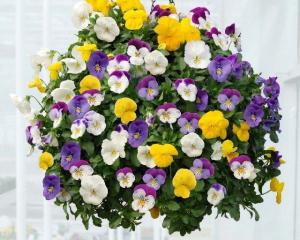Poppies have long been a symbol of sacrifice, says Gillian Vine.
Today, many of us will wear a poppy, usually a cloth one as the soldier's or Flanders variety is unlikely still to be flowering.
Forty-five years ago, an elderly Gore man showed me the poppy he always carried in Anzac Day parades.
Too fragile to pin on his lapel, it was preserved in tissue paper in his wallet and was, he explained, the real thing.
Snatched from a roadside as he marched, an action which caused him grief for breaking ranks, it became for him a symbol of the comrades who died in Flanders fields.
But what are these poppies? Originally known as corn poppies, Papaver rhoeas spring up in Europe where soil has been disturbed.
They were commonplace in Europe on tilled ground, especially where grain was grown, and Claude Monet's 1873 painting, Les Coquelicots (The Corn Poppies), shows a meadow bright with the red flowers.
In Iran, poppies are an ancient symbol of the blood of martyrs and after the Napoleonic Wars, Europeans recognised that the poppies were one of the first flowers to appear after a battle.
It was not until World War 1, however, that they became a widespread symbol of sacrifice, with New Zealand's first Poppy Day held in 1922.
This year, the RSA has joined forces with seed company McGregors and New Zealand Gardener magazine to promote Flanders poppies, so it is to be expected that next spring the silky red flowers will be seen in many gardens.
The poppy with a larger black blotch that is sometimes sold as a soldier's poppy is a different species, P. commutatum. Native to Turkey and Iran, it is most likely the Persian martyrs' poppy.
There are numerous other poppies, annual and perennial, all belonging to the Papaveraceae family, whose 40-plus genera have two of particular importance to gardeners, Papaver and Meconopsis.
Other members of the Papaveraceae family are blood root (Sanguinaria), Californian poppies (Eschscholzia), tree poppies (Romneya) and plume poppies (Macleaya).
Soldier's poppy is closely related to Shirley poppies, fast-growing annuals that are popular in wildflower mixes.
As well as red, pink and bicolours, there is pure white, the latter available as a named selection, Bridal Silk. Picotee Mix, described in catalogues as a double variety, is more a semi-double but pretty nonetheless.
For a true double, paeony-flowered P. somniferum var. paeoniflorum is unbeatable with its huge flowers above grey-green foliage.
A sub-species of the opium poppy, it supposedly contains none of the drug. Similar in looks are Oriental poppies (Papaver orientale), large-flowered and often mistaken for opium poppies by raiders of innocent gardeners' plots.
Long popular in the South are Iceland poppies (P. nudicaule). As they are native to sub-polar regions of Europe, Asia and North America, they are extremely hardy.
Flowers of these short-lived perennials are yellow, orange, salmon or white and although seedlings can be a bit difficult to transplant, they self-seed readily.
For self-seeding, the Welsh poppy (Meconopsis cambrica) wins hands down. Once you have this orange or yellow-flowered perennial, it will be in your garden for ever unless you take the time to deadhead every day.
The only meconopsis from Europe - the other 40 or so species hail from the Himalayas - the Welsh poppy's free-seeding habit and enthusiastic germination set it aside from the blue poppies, M. grandis and M. betonicifolia, both of which are notoriously difficult to get started from seed.
However, southern gardeners have the advantage here, as these Himalayan beauties like cold weather and the celestial blue makes them plants to persevere with.
The other splendid meconopsis is M. napaulensis, whose furry leaves are even more impressive than its yellow flowers.
You may find red, purple or white forms sold as M. napaulensis but in a 2006 reclassification, these have been moved into other species.
To mark the centenary of the start of World War 1 and the deaths of so many men and women, grow Flanders poppies or opt for a different species to truly make this the year ''we will remember them''.










